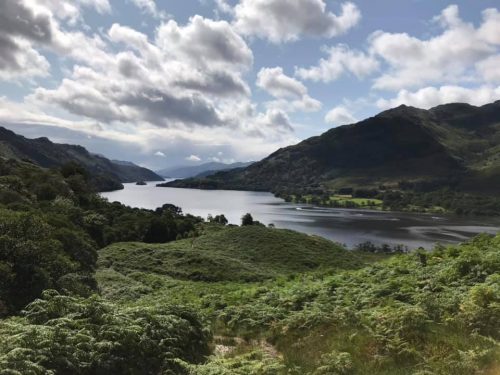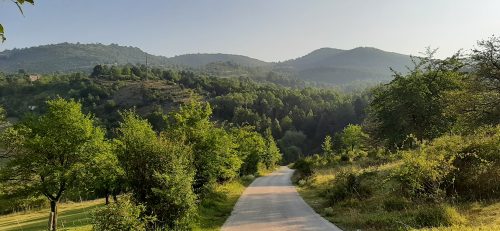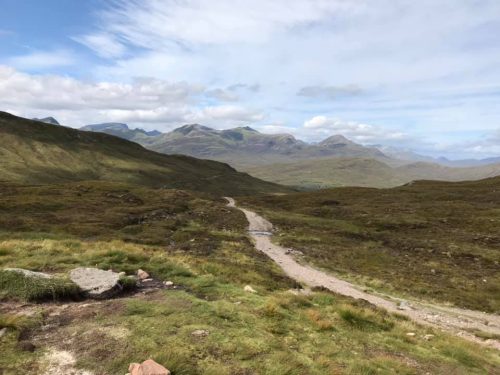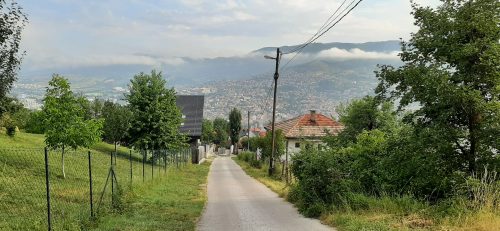A Walk in the Woods – a guest post from Kevin Sullivan
Kevin Sullivan, author of The Figure in the Photograph and The Art of the Assassin, is our Author of the Month for August 2021. To celebrate the paperback publication of The Art of the Assassin in August we invited Kevin to reflect about his experience walking the West Highland Way and from Sarjevo to Visegrad.

Years ago, a friend and I walked from Sarajevo, in the middle of Bosnia and Herzegovina, to Višegrad, a town on the Serbian border and the setting for Ivo Andrić’s celebrated novel, ‘The Bridge on the Drina’. More recently, with the same friend I walked the West Highland Way, from Glasgow to Fort William. There are contrasts between hiking in Scotland and Bosnia. Bosnia has bears, wolves, wild boar and peaks considerably higher than Ben Nevis. Scotland has reindeer and midges and a lot less sunshine. When we arrived in Višegrad after a four-day hike we were sunburnt. When we arrived in Fort William after six days in the great outdoors we were soaked – or, to use the more expressive local word, drookit. Of course, there were glorious bursts of sunshine on the picturesque banks of Loch Lomond, but the default meteorological status was drizzle verging on downpour. I often found myself thinking: this must be so beautiful in summer, and then I remembered – this is summer.

Whereas the Hanoverians built roads to pacify the Highland clans after the Jacobite Rebellion, when they had snatched Bosnia and Herzegovina from the Ottoman Empire in the second half of the nineteenth century, the Habsburgs built railways. The narrow-gauge line from Sarajevo to Višegrad (we followed the route, now sadly defunct) is a thing of consummate industrial-age beauty, with stone-dressed tunnels and granite embankments clinging to the sides of densely wooded valleys.
General Wade’s military road through Glencoe has stood the test of time less valiantly. One becomes peculiarly sensitive to the shortcomings of redcoat engineering when trudging for hours from pothole to pothole in the pouring rain.
On the way to Višegrad, we met villagers dressed in the loose trousers, billowing linen shirts and embroidered headscarves that have been worn for centuries in this part of the Balkans. Sitting on the banks of the Drina watching the green water flow by in the mid-morning sunshine we heard a (somewhat mournful) melody in the distance: when we climbed to the brow of the hill we witnessed a solitary farmer harvesting a field of wheat and singing to the rhythm of each scythe stroke. It was a scene that might have been lifted straight out of Tolstoy or Turgenev.

On the West Highland Way the other walkers (and there were many) were the principal source of human interest. We encountered Americans, Australians, New Zealanders, Scandiwegians, and Central Europeans, as well as people from France, Italy, Spain, and Germany, with a respectable smattering of Brits thrown into the mix. There were hikers with dogs – including one whose pooch was equipped with its own miniature backpack. Joggers, some of them well beyond the full bloom of youth, padded past us wearing streamlined acrylic backpacks and expressions of faintly alarming determination.
The night after we stayed in Balmaha, the hotel there was burgled, and the evening we arrived in Crianlarach one of those dinner theatre events was held where actors stage a homicide and invite diners to identify the culprit. Rather than Tolstoy or Turgenev, my thoughts drifted to a more whimsical corner of the literary universe. I wondered how Agatha Christie might have handled “Murder on the West Highland Way”. There are as many types of backpacker as there are human beings. One can imagine Poirot quizzing a suspicious-looking hiker: ‘And so, Monsieur, you say there was nothing in the little doggie’s backpack but a wet mackintosh and a pair of wellington boots, n’est-ce pas?’

It was Nietzsche’s view that ‘all truly great thoughts are conceived by walking’ – though, of course, Nietzsche would not have been most people’s idea of entertaining company on a long ramble. Still, his observation holds true – walking is a tonic for the imagination, whether in Scotland or Bosnia or anywhere in between.
Both The Figure in the Photograph, and The Art of the Assassin by Kevin Sullivan are out in paperback now.


